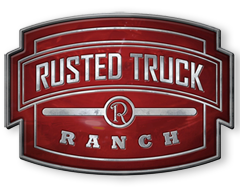Fuel for your Food
08 October, 2014
One of the most important factors in making that great slice of brisket or the perfect grilled steak is the fuel used in your cooking process. While gas grills offer a level of convenience, great food requires combustion from natural fuels to produce the flavor and aroma we crave from outdoor cooking. Here are a few tips and notes regarding smoke, wood, and charcoal.
A little information about SMOKEAim to produce a “light blue” smoke. Thick white or gray smoke is not ideal, and with extended exposure, it can produce off flavors in your food.
Smoke is a great addition to meat. However, be careful not to apply too much.
Wrapping your meat in foil can reduce smoke density on long cooks.
Chicken and Fish are more sensitive to over smoking, while Pork and Beef can handle a more intense smoke flavor.
WOOD for flavor CHARCOAL for heat
Generally speaking, I burn a mixture of charcoal and wood in all my pits (Offset, Vertical, Kamado Joe, Weber).
I start all of my fires with a base of charcoal. Once the smoker is close to the appropriate temperature, I add wood (logs or chunks) to produce smoke and flavor.
When the fire needs additional fuel, I continue to add a mix of charcoal and wood.
WOOD Do’s and Don’ts
Use dried hardwood, nut wood or fruitwood from trees such as Mesquite, Pecan, Oak, Apple, Cherry or Peach.
Fruit trees will give a lighter and sweeter smoke flavor, and are often used on fish and chicken.
Woods such as Hickory, Oak, and Pecan produce a stronger more distinct smoke flavor. I tend to use these when smoking beef and pork.
Split the wood as opposed to burning whole logs. More surface area makes for a more even burning fire.
Mesquite has a distinct flavor and burns the hottest. It is very accessible in Texas and the South. When used during smoking, it can be overwhelming.
Use chunks over chips. Chunks are about the size of your fist. They burn slower and produce smoke over a longer time frame. My favorite brand is Western Woods available at most Academy Sports stores.

Don’t use fresh cut or green wood. It can produce off flavors due to the excessive moisture. It also takes more energy to burn
Don’t use wood from conifers: pine, fir, spruce, redwood, cedar or cypress.
Don’t soak your wood or chips. Soaking wood even for extended periods of time results in very little penetration of water.
CHARCOAL
Charcoal is made by cooking wood in a very low oxygen environment.
It burns hotter, more consistent, and cleaner than natural wood.
Charcoal BRIQUETTES
Briquettes are the square pieces of compressed ground charcoal that we commonly associate with Kingsford.

They are made from scraps of wood and sawdust, and use additional “fillers” to hold the ground pieces into their form.
Many people believe briquettes put off a foul smell when burning. Quite frankly, I don’t believe this to be true. I’ve smoked 100’s of briskets in my Pitmaker Vertical smoker without any hint of off flavors.
When lit using a charcoal chimney, briquettes can be a great source of energy for you pit.
Never use Match-Light or lighter fluid with briquettes. Those additives can produce off flavors in your food.
LUMP charcoal
Lump charcoal is made from hardwood chunks, logs, and scraps. Size and shape will vary depending on the base material used in the process.
Lump burns hotter and cleaner than processed charcoals. It also produces less ash.
If using an Egg or similar Komodo type cooker, lump is a must. (As the ash falls through the holes in the bottom of the cooker, there isn’t a great deal of room for that waste)
While lump is generally more expensive, the absence of fillers makes it comparable in price to the price of briquettes.
Some of my favorite brands are B&B and Ozark oak.


EXTRA bits and pieces
You can add fruits and vegetables to your fire for additional smoke flavor.
I LOVE to throw full cloves of garlic on my Kamado Joe when cooking chicken. You can also add dried herbs to your smoker or grill for some additional flavor infusion. Place them on the edges of the fire so they slowly smolder during cooking.





